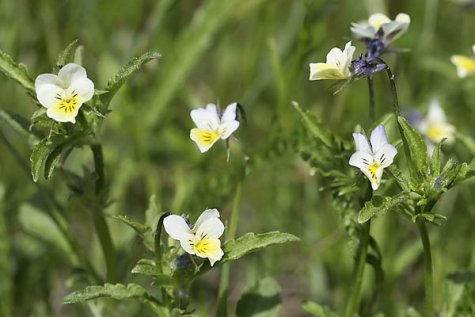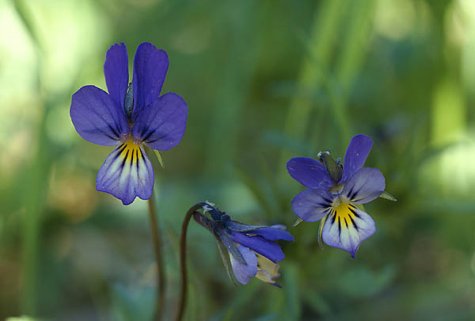About the beautiful violas
Photo: Arne Ader
Translation: Liis
Field pansy
Field pansy Põldkannike Viola arvensis
Wild pansy Aaskannike or käoorvik Viola tricolor
Pansies or garden violas surely all know but in nature ”miniature models” of garden violas grow wild, and quite a lot of them – forty species in Estonia. The field pansy is the most widely spread of them; the plant is up to forty centimetres high, and it prefers dry and sandy soil as habitat.
The modestly small beautiful flowers of the field viola are not eye-catching, only up to a centimetre and half in diameter, pale yellow in colour. In warm open habitats field pansies may have been flowering for a month already and in case of a mild autumn flowering does not end until December or even January.
Habitats are fields, gardens but also waste land, and it is held to be a weed; weeds reproduce easily as we know, so how does the field pansy spread it seeds? The field pansy has a seed capsule that throws out the seeds (ballochory). The seeds ripen in a capsule and are dispersed accompanied by a slight crack all at once. Normally an annual but a specimen that has flowered in autumn can survive the winter and scatter its seeds next spring …
With cultivation of fields and also with traffic the seeds of violas often arrive in new habitats where they cross, by necessity, with other species of violas already growing there: so hybrids are created.
Wild pansy
The flower of a wild pansy is large and three-coloured (in Latin tricolor), that of the field pansy small and two-coloured. By the shape of leaves as well as the placing of stipules the described species are similar to each other, and different from other violas.
The diameter of the flower may be up to three centimetres, there are five petals and the upper petals tend to be larger and darker, the lower paler.
The garden pansy is developed from the wild pansies. It was sold as an ornamental garden plant in Europe already in 1830. Garden pansies naturalize easily and so our story of violas has come full circle.










